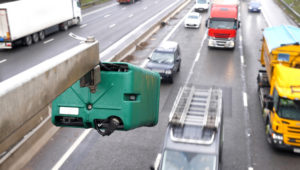 License Plate Recognition cameras, or LPR cameras, were originally designed as a tool for law enforcement personnel to track down stolen vehicles. However, the popularity and uses of this camera technology have since spread. Before understanding how you can employ an LPR camera in your current or new surveillance system, it’s important to first understand exactly what sets it apart.
License Plate Recognition cameras, or LPR cameras, were originally designed as a tool for law enforcement personnel to track down stolen vehicles. However, the popularity and uses of this camera technology have since spread. Before understanding how you can employ an LPR camera in your current or new surveillance system, it’s important to first understand exactly what sets it apart.
Unique characteristics of LPR cameras
Unlike other cameras, LPR technology is designed specifically to combat the natural reflective properties of license plates. Many times, even with high-quality cameras, it may be difficult to make out the entirety of a license plate number because of high lighting, the glare of headlights, or quick motion of a speeding vehicle. LPR cameras combat that with night vision, light-filtering, automatic mode switching, and high shutter speeds.
LPR cameras capture quality images at night to ensure you record the full license plate number.
There are many reasons why public and private organizations alike would want to take advantage of this technology. Having your mobile or fixed-poled surveillance cameras equipped with LPR provides your property with even more security.
Common uses for License Plate Recognition cameras
Here are 5 of the most popular uses for LPR cameras:
- Parking lots
Many crimes can occur in a parking lot, from simply backing into another person’s car, to vandalism, mugging, or worse. The presence of cameras can help to capture those crimes, while LPR technology can ensure you record the license plate so that the police can successfully track down the culprit. - Private Communities
Many people choose to live in gated communities for the safety, security, and exclusivity it offers. However, while guards at the gate and camera systems throughout the streets can help filter who enters and exits, smart criminals may actually know someone in the neighborhood or could pose as a worker or someone else. Capturing every license plate can help to dwindle down a list of suspects should an incident occur. - Construction Sites
Whether you’re remodeling your home or you’re managing the new construction of a large building, it can be difficult to keep track of all of the workers in and out of your job site. Listing license plate numbers can help you keep a thumb on when people are entering and leaving the site, and narrow down suspects should there be an instance of theft or vandalism. It can also help you keep an eye on employees to make sure work is progressing according to schedule. - Schools and Hospitals
These sensitive public areas can utilize LPR cameras to monitor and control who accesses their campuses. In some cases, “hotlists” can be made of license plates to quickly identify when known criminals, reported offenders, or other suspicious characters enter the vicinity. This allows security officials to quickly notify police so that the person can be removed before causing any harm. - Traffic Violations
The police have also found new ways to enhance the way they use LPR cameras and now install them in major intersections or along toll roads to help enforce important traffic laws. These cameras not only capture people speeding or skipping out on toll fees, but can also be helpful in identifying and punishing drunk and reckless drivers or for tracking down criminals on the run.
There are dozens of ways that LPR cameras can help public and private businesses. If you are in the mid-Atlantic region and are interested in seeing how License Plate Recognition technology can improve your surveillance system, contact a security expert at Maryland Professionals today for a free consultation.
